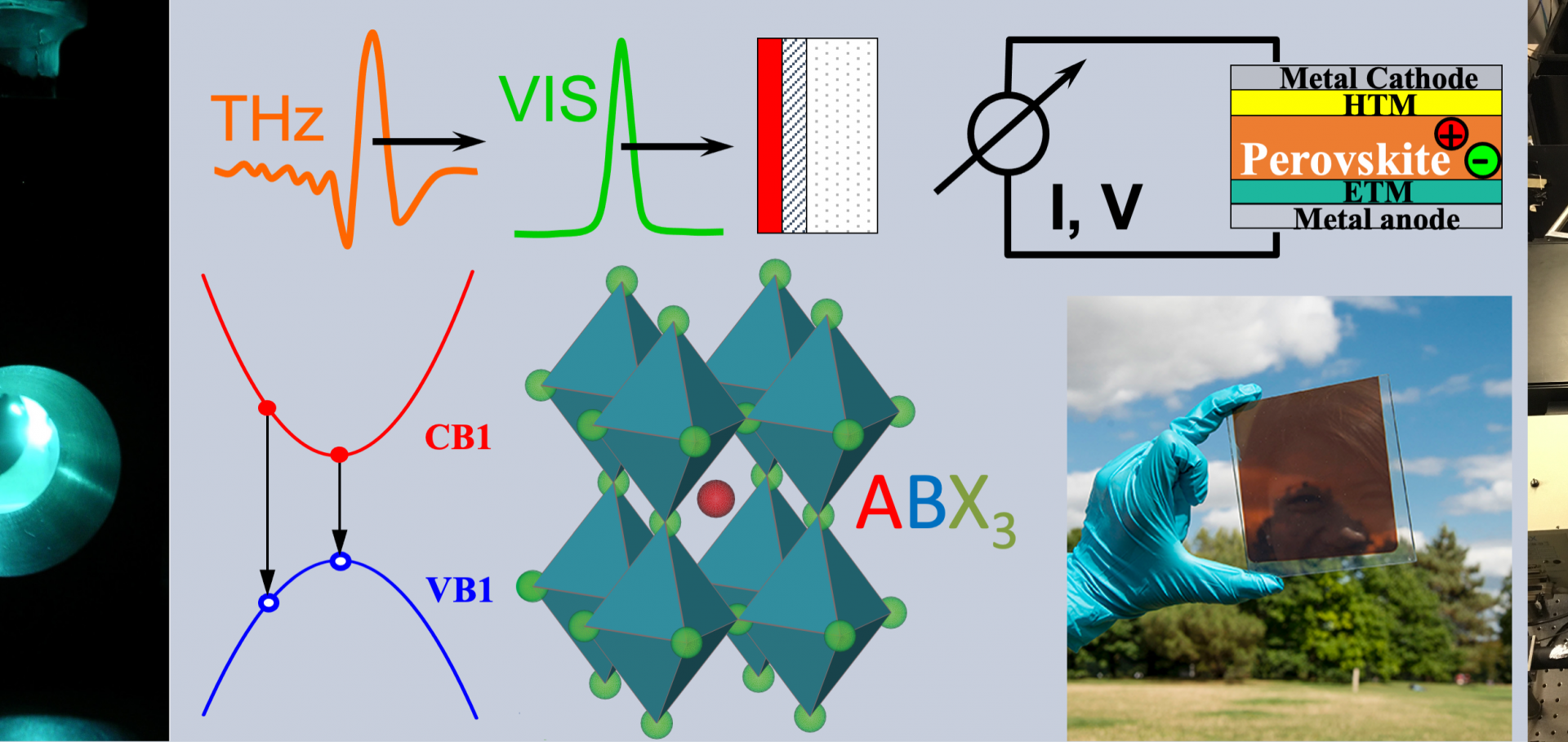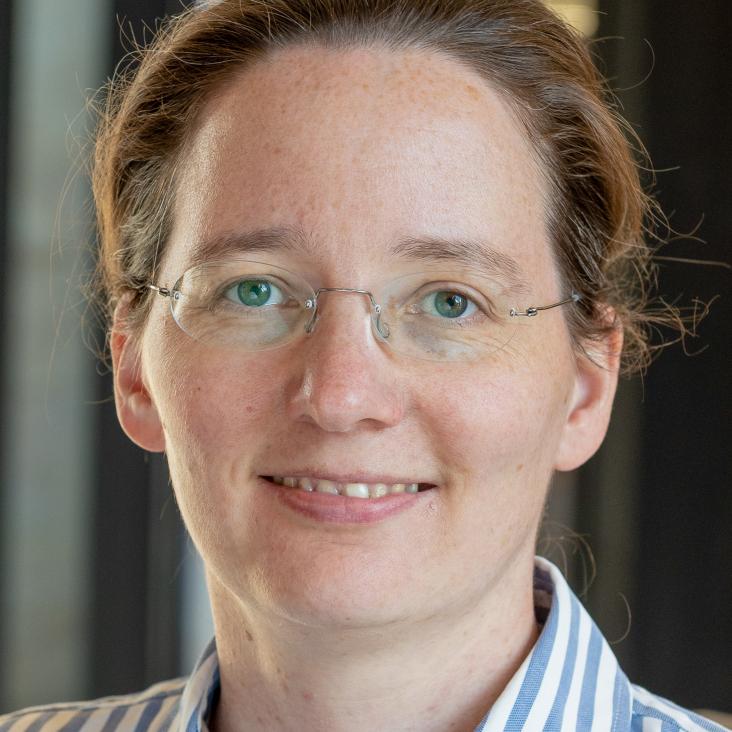Photoactive Thiophene‐Enriched Tetrathienonaphthalene‐Based Covalent Organic Frameworks
Small Wiley (2025) e11000
Abstract:
The optoelectronic properties of covalent organic frameworks (COFs) can be controlled by the design of their molecular building blocks and assembly. Here, a facile and efficient synthetic route is reported for the novel thiophene‐enriched tetrathienonaphthalene (TTN)‐based node 4,4′,4″,4′″‐(naphtho[1,2‐b:4,3‐b′:5,6‐b″:8,7‐b″′]tetrathiophene‐2,5,8,11‐tetrayl)tetraaniline (TTNTA) for constructing imine‐linked COFs. Utilizing TTNTA, highly crystalline, thiophene‐enriched donor–donor (D–D) and donor–acceptor (D–A) COFs, denoted as TT COF and BDT(BT)2 COF, are synthesized using two distinct aldehyde‐functionalized linear linkers: [2,2′‐bithiophene]‐5,5′‐dicarbaldehyde (TT) and 7,7′‐(4,8‐diethoxybenzo[1,2‐b:4,5‐b′]dithiophene‐2,6‐diyl)bis(benzo[c][1,2,5]thiadiazole‐4‐carbaldehyde) (BDT(BT)2), respectively. Highly crystalline and oriented TTNTA COF films on various substrates via a solvothermal method enabled further comprehensive optical and electronic characterizations. Optical‐pump terahertz‐probe spectroscopy revealed effective charge‐carrier mobility values φμ = 0.34 ± 0.04 and 0.18 ± 0.02 cm2V−1s−1 for TT and BDT(BT)2 COF films, respectively. These results reveal distinct charge‐transport characteristics and provide mechanistic insights into their ultrafast charge‐carrier dynamics. The COFs are demonstrated to be photoactive, showing promising potential as photocathodes without co‐catalysts in photoelectrochemical water splitting, with notable photocurrent densities of 10 and 15.3 µA cm−2 after 1 h illumination, respectively. This work highlights the potential of TTNTA‐based COFs in optoelectronic applications and provides insights into the design of thiophene‐enriched COFs with high crystallinity and photoactive behavior.Impact of Halide Alloying on the Phase Segregation of Mixed‐Halide Perovskites
Small Structures Wiley (2025) e202500545
Abstract:
Mixed‐halide perovskites are ideal mid‐ and wide‐gap absorbers for multijunction solar cells, but stable photovoltaic performance is severely hampered by halide segregation. This study reveals that crystalline film quality and halide segregation are critically affected by bromide fraction x in CH3NH3Pb(I1−xBr x )3 because of macrostrain and ordered‐phase formation. X‐ray diffractometry across stoichiometries spanning 22 bromide fractions demonstrates that central compositions near x = 0.5 form two macrostrained phases, which exhibit halide segregation under light at different rates. While the overall amplitude of phase segregation follows a broadly symmetric distribution in compositional space, maximized near x = 0.5, the potentially ordered compositions of CH3NH3PbIBr2 and CH3NH3PbI2Br diverge sharply, presenting particularly stable and unstable scenarios, respectively. Notably, halide segregation is shown to occur even below the widely quoted perceived threshold of x = 0.2. Such analysis highlights promising approaches to mitigate halide segregation, through engineering of macrostrained phases and local atomistic ordering. Together, these observations provide crucial benchmarks for proposed models of halide segregation and establish new routes toward segregation‐resistant materials for multijunction perovskite‐based photovoltaics.Correlated Vibrational and Electronic Signatures of Surface Disorder in CsPbBr<sub>3</sub> Nanocrystals.
ACS nano (2025)
Abstract:
Lead halide perovskite nanocrystals have emerged as promising candidates for classical light-emitting devices and single-photon sources, owing to their high photoluminescence quantum yield, narrow emission line width and tunable emission. Judicious choice of ligands to passivate nanocrystal surfaces has proven to be critical to the structural stability and optoelectronic performance of such nanocrystals. While many ligands have been deployed, the resulting quality of the nanocrystal surface can be difficult to assess directly. Here, we demonstrate ultralow frequency Raman spectroscopy as a powerful tool to resolve surface-sensitive changes in size and ligand choice in perovskite nanocrystals. By investigating a size series of CsPbBr3 nanocrystals from the strong (5 nm) to the weak (28 nm) confinement range, we show that the line width of Raman-active modes provides a highly selective metric for surface disorder and quality. We further examine a series of 28 nm diameter nanocrystals with four different zwitterionic ligands, unravelling clear links between varying steric effects and surface quality evident from Raman analysis. Photoluminescence and THz photoconductivity probes reveal an evident correlation of charge-carrier dynamics and radiative emission yields with ligand chemistry and surface quality inferred from phonon broadening. We further show that surface defects preferentially trap hot charge carriers, which affects exciton stability and radiative emission yields. Overall, our approach offers powerful insights into optimizing nanocrystal-ligand boundaries to enhance the performance of nanoscale quantum light sources and optoelectronic devices.Control Over the Microstructure of Vapor‐Deposited CsPbBr 3 Enhances Amplified Spontaneous Emission
Advanced Optical Materials Wiley (2025) e02160
Abstract:
Inorganic cesium‐based metal halide perovskite (MHP) semiconductors have great potential as active layers in optoelectronic devices, such as perovskite light‐emitting diodes (PeLEDs) and perovskite lasers. However, precise control of crystal type, quality, and thickness is required to create high‐performance and reproducible devices. Vapor‐phase vacuum deposition enables fabrication of MHP thin films and devices with excellent uniformity and control over layer thickness, although a full understanding of crystal growth mechanisms and products has proved elusive. Here, conditions of vapor co‐deposition of CsBr and PbBr are related with the optical performance and atomic microstructure of resulting CsPbBr3 thin films. It is found that the structure is predominantly photoactive γ‐CsPbBr3 over a wide range of conditions, but the presence of impurity phases and Ruddlesden–Popper (RP) planar defects both degrade optical performance as quantified through measured amplified spontaneous emission (ASE) thresholds. Furthermore, the atomic structure of the dominant impurity phases is resolved: CsPb2Br5 and Cs4PbBr6. It is revealed that a small nominal excess of CsBr‐precursor flux during co‐evaporation can significantly enhance the nucleation of thin films, resulting in well‐defined grains greater than 500 nm in size and the relative suppression of RP planar defects. Such films exhibit intensified photoluminescence (PL) emission and a reduced ASE threshold of 30.9 µJ cm−2.Optically Determined Hole Effective Mass in Tin-Iodide Perovskite Films
ACS Energy Letters American Chemical Society 10:9 (2025) 4589-4595


